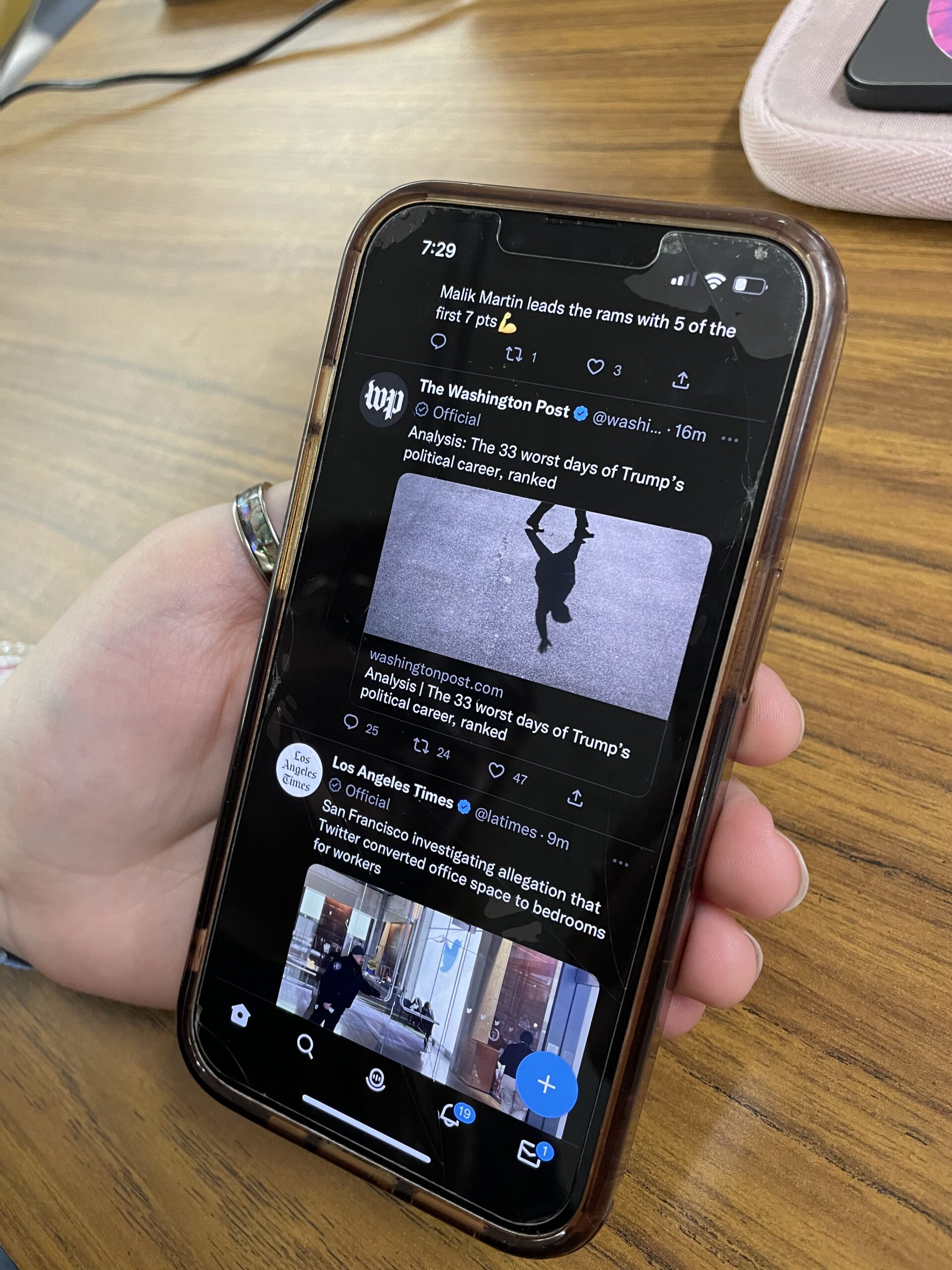How can we define the First Amendment in the age of social media? PHOTO CREDIT: Maddie Bataille | Photo Editor
Twitter has played a prominent role in how people digest media.
In the past, Twitter has banned people who “abused” the platform to spread hate or misinformation. In October of this year, billionaire Elon Musk bought the company, and has since vowed to reinstate previously banned accounts, such as the accounts of former president Donald Trump and Kanye West.
Musk’s take on Twitter is ‘complicating’ the understanding of free speech, according to NBC News. Debates have taken place on whether or not censoring information or restricting people on social platforms falls into a violation of the First Amendment.
According to an article by the Atlantic, Twitter’s role in restricting access, or taking down inappropriate content, is covered by the First Amendment, as they are a private company.
However, the role in which these corporations can play in affecting what’s on the media is highly debated.
“Any rule to limit who can access social media has to be implemented systematically,” said Skip Mark, assistant professor of political science at the University of Rhode Island.
He explained that, in order for something to be justifiable, there must be a clear way to measure how to evaluate when someone “abuses” social media.
Mark explained that there should be a more collective thought about guidelines on social media, and that it cannot just be run by individual governments, but rather needs to be run by a world-wide collective, on international guidelines.
“Otherwise, we are letting private interests dictate the way that we get our news,” Mark said. “The way we get our information, and which voices are highlighted and which voices are silenced.”
However, Mark acknowledges that free speech is much more complicated than many believe.
He explained that there are three main ways people view how we should use free speech: One way being that we should be able to say whatever we want, but then we still have to live with the social consequences of saying things that are offensive. The second way being, we should allow people to say anything that does not directly cause harm to other individuals or leads to violence. The third way is that we should limit the use of rhetoric and speech that is blatantly incorrect and purposefully misleading.
“In terms of what we mean when we say free speech,” Mark said. “I think this is a question we have to decide collectively but also globally.”
In terms of what counts as infringement of the First Amendment, there is a lot of back and forth between how we view speech that is harmful.
Professor of Political Science Emily Lynch says there are ways that, while this is happening, we can view the media we ingest through a filter.
“Media literacy is key here,” Lynch said.
In recent years, social media has applied certain “warning labels” to posts that could be telling the viewer misinformation. However, that doesn’t always stop information being spread.
“A lot of messages out there are coming from a particular view,” Lynch said. “It’s important that we are being aware of where that message is coming from, and knowing how to check sources to be an informed citizens.”
With fake news, misinformation and people being easily able to spread hate online, Lynch said “we want, and we need to be able to navigate social media.”
Using social platforms such as Twitter, Facebook or Instagram comes with positives and negatives, especially when it comes to ingestings our news.

